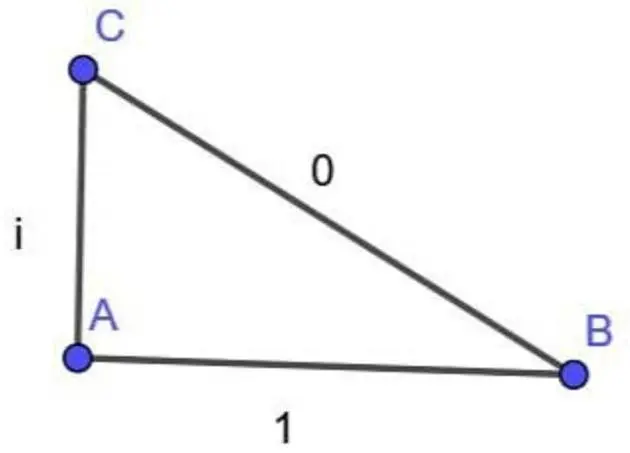this post was submitted on 30 Oct 2024
384 points (97.3% liked)
Science Memes
11631 readers
2356 users here now
Welcome to c/science_memes @ Mander.xyz!
A place for majestic STEMLORD peacocking, as well as memes about the realities of working in a lab.

Rules
- Don't throw mud. Behave like an intellectual and remember the human.
- Keep it rooted (on topic).
- No spam.
- Infographics welcome, get schooled.
This is a science community. We use the Dawkins definition of meme.
Research Committee
Other Mander Communities
Science and Research
Biology and Life Sciences
- [email protected]
- [email protected]
- [email protected]
- [email protected]
- [email protected]
- [email protected]
- [email protected]
- [email protected]
- [email protected]
- [email protected]
- [email protected]
- [email protected]
- [email protected]
- [email protected]
- [email protected]
- [email protected]
- [email protected]
- [email protected]
- [email protected]
- [email protected]
- [email protected]
- [email protected]
- [email protected]
- [email protected]
- !reptiles and [email protected]
Physical Sciences
- [email protected]
- [email protected]
- [email protected]
- [email protected]
- [email protected]
- [email protected]
- [email protected]
- [email protected]
- [email protected]
Humanities and Social Sciences
Practical and Applied Sciences
- !exercise-and [email protected]
- [email protected]
- !self [email protected]
- [email protected]
- [email protected]
- [email protected]
Memes
Miscellaneous
founded 2 years ago
MODERATORS
you are viewing a single comment's thread
view the rest of the comments
view the rest of the comments

Would you explain how, for a simpleton?
The short version is: we use some weird abstractions (i.e., ways of representing complex things) to do math and make sense of things.
The longer version:
Electromagnetic signals are how we transmit data wirelessly. Everything from radio, to wifi, to xrays, to visible light are all made up of electromagnetic signals.
Electromagnetic waves are made up of two components: the electrical part, and the magnetic part. We model them mathematically by multiplying one part (the magnetic part, I think) by the constant
i, which is defined assqrt(-1). These are called "complex numbers", which means there is a "real" part and a "complex" (or "imaginary") part. They are often modeled as the diagram OP posted, in that they operate at "right angles" to each other, and this makes a lot of the math make sense. In reality, the way the waves propegate through the air doesn't look like that exactly, but it's how we do the math.It's a bit like reading a description of a place, rather than seeing a photograph. Both can give you a mental image that approximates the real thing, but the description is more "abstract" in that the words themselves (i.e., squiggles on a page) don't resemble the real thing.
Makes sense, thanks. More of a data transmission than an electrical power thing.
Yeah, it's about how electromagnetic energy travels through space.
Thanks!
I remember the first time we jumped into the complex domain in an electronics course to calculate something that we couldn’t reach with the equations we had so far.
… and then popping out the other side with a simple (and experimentally verified) scalar, after performing some calculation in the complex domain, using, bafflingly, real world inputs.
I suddenly felt like someone from the future barged into my Plato’s cave and proceeded to perform some ritual.
Like I know what’s happening, I’ve done these calculations before, but seeing them used as an intermediate step in something real in the real world was pretty cool!
Did not prepare me for all the Laplace et al shenanigans later. Did I test well in those courses? No. Did I have the most fun building the circuits regardless? You bet.
Oh to be a student again. Why are real world jobs so boring.
Circles are good at math, but what to do if you not have circle shape? Easy, redefine problem until you have numbers that look like the numbers the circle shape uses. Now we can use circle math on and solve problems about non-circles!
Use the Pythagorean theorem: the length of the hypotenuse is equal to the sum of the squares for the other two sides. 1x1=1. ixi=-1. 1+(-1)=0.
Yeah I get that, but what's the application to electromagnetism? I'm an electrician, it's been a few years since I had to think about induction and capacitance calculations, but I do recall them being based mostly on trigonometry. Where does i come into play, I guess is what I'm asking.
I think the GP is going with complex numbers representing a magnitude and a rotation angle, so that side with length "i" is rotated, and A is an angle of 0°.
But this image is out of order for that. This one would lead to A = 180°. Either way, you can't use Pythagoras theorem anyway.
The "i" terms represent the induction and capacitance of a system, while the real component represents the resistance. You can think of "i" terms as the characteristics that hold energy in some way (in mechanical terms, something springy or something with inertia).
Sorry I insta-deleted because I realized I wasn't answering the question but it looks like it still slipped through.
I wasn't answering the question because I don't know. I'm aware that imaginary numbers play a major role in circuit math, but I also need an expert to ELI5.